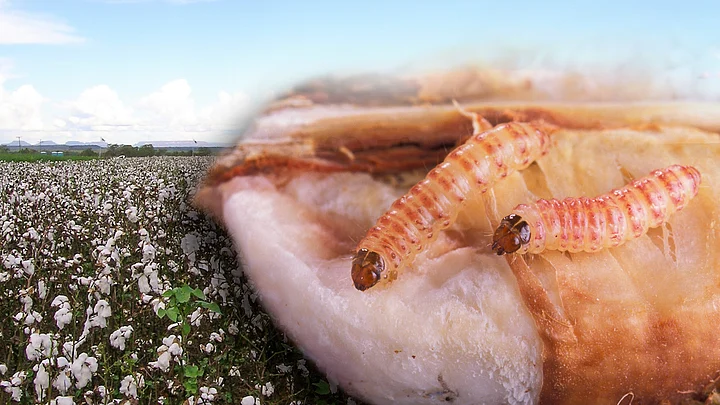A paradox of Indian governance is that people will be faulted for trying to cope with the failure of governments to do what they are supposed to do. Delhi, for example, was planned in a way that it developed as a sprawl, forcing people to rely on personal vehicles in the absence of reliable public transport but that is now held against them.
Another paradox is that where it is needed, the government will be missing in action, but will show up in places where it is not required. An example is the agriculture ministry’s assumption of powers in December to regulate the prices of Bt cottonseeds when stiff competition among sellers is keeping them in check as it is, but the failure to enforce rules to prolong its resistance to deadly pests like the pink bollworm.
In nature, there is a constant battle for survival. If cornered prey are not allowed an escape chute, chances are they will strike back very much like the enfeebled Congress Party has against the ruling BJP in the past two parliament sessions, stalling proceedings to show its relevance.
A version of Bt cotton with two insecticidal genes derived from agro-bacteria was approved in 2006, after cases surfaced of the pink bollworm developing resistance to the single-gene version approved in 2001.
Bollworms – American, pink and spotted – were the scourge of the cotton crop in India, requiring huge doses of pesticide, till Bt cotton came on the scene.
But cases of the pink bollworm developing resistance to the single-gene version in four districts of Gujarat – Amreli, Bhavnagar, Junagadh and Rajkot – surfaced in 2009. This was attributed to farmers not planting non-Bt cotton plants around their Bt cotton crop for the bollworm to feed on so that they do not develop resistance to the insecticidal proteins in them through natural selection (which is how evolution works).
Six years later, history is repeating itself. Gujarat’s agriculture officer reported that five to ten percent of the state’s cotton crop is infested with the pink bollworm. The pest has re-emerged, he said, in the districts of Amreli, Bhavnagar, Junagadh, Rajkot, Baroda and Ahmedabad. Consequently, the cotton area in the state had declined to 25 lakh ha this year against 30.10 lakh ha last year, he asserted. The reasons are the same.
Why the Pink Bollworm Has Returned
- Farmers do not follow rules like planting non-Bt cotton with Bt varieties
- More profitable crops like pigeon pea are grown, making matters worse
- Seed companies often provide inferior non-By seeds, which do not germinate and cannot host Pink Bollworms
- All this leads to the worms attacking Bt cotton plants
The tendency of farmers to chase profits at any cost with scant regard for rules and state governments’ reluctance to enforce them has led to a development fraught with anxiety. There is no alternative to fight the pink bollworm as it has developed resistance to a class of pesticides called pyrethroids that was previously used. CD Mayee, the former director of Nagpur’s Central Institute of Cotton Research (CICR), says resistance to pyrethroids developed in less than ten years.
With every 450 gram packet of Bt cottonseed, farmers are provided a 120-gram pouch of non-Bt cottonseed which they are supposed to sow around the perimeter of fields. But farmers consider this a waste or have taken to planting the more remunerative pigeon pea (tur). Pigeon pea hosts bollworms alright, but not the pink variety. So it has nothing to feed on in states like Gujarat. Seed companies also cut corners, supplying inferior non-Bt seed, which in many cases would not germinate at all.
The extension of the crop with supplementary irrigation to 8-10 months to enable more pickings has also played a role. Pink bollworms now have a longer breeding period. Termination of the crop by December would interrupt the breeding cycle, according to KR Kranthi, Director of CICR.
At the meeting called by the agriculture ministry to find solutions, it was decided that blending of Bt cottonseed with five percent non-Bt seeds should be allowed so that farmers are denied an option. This method, called refugia-in-bag might be permitted before the next planting season.
Kranthi also suggested other measures for control of the pest including,
- Growing shorter duration 150-160 day cotton varieties or hybrids
- The use of a parasite that destroys the pink bollworm by laying eggs within its eggs
- Installation of devices with sex hormones to trap male bollworms near fields, ginning mills and cotton yards
- The destruction of cotton waste and stalks soon after harvest to kill residual pupae and larvae
- Spraying the crop with specific pesticides mid-October or in November when the population of the pest crosses the economic threshold level (ETL).
Kranthi also wanted all seeds with cotton bolls or pods to have both the insecticidal Bt proteins (called homozygous expression), as bollworms are hidden feeders; they reside inside bolls. Currently, some seeds have no Bt toxin at all, while a few others have one or the other Bt gene but not both. This allows the bollworms, to develop resistance. Kranthi blamed the practice of producing hybrids with one homozygous parent, and not both, for this phenomenon.
That brings me to another paradox of Indian governance: governments are vast repositories of knowledge, but it seems that it takes a crisis for them to act.
(Vivian Fernandes is the editor of www.smartindianagriculture.in)
(At The Quint, we question everything. Play an active role in shaping our journalism by becoming a member today.)
